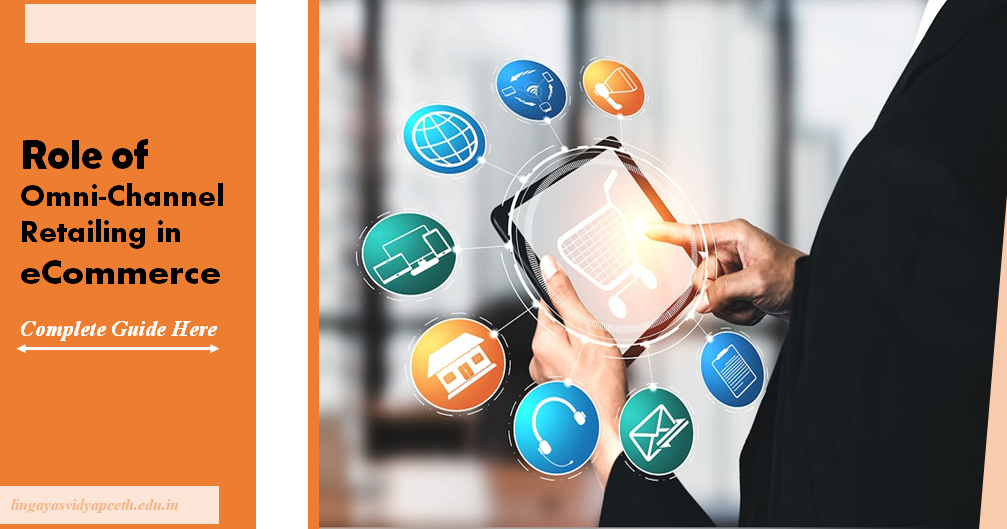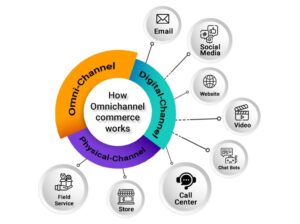Home » Role of Omni-Channel Retailing in eCommerce? Complete Guide Here!

In today’s digital age, the boundaries between online and offline retail are becoming increasingly blurred. Consumers expect a seamless and integrated shopping experience, regardless of whether they are browsing in-store or online. This shift has given rise to the concept of omni-channel retailing, which involves integrating physical stores with ecommerce platforms to provide customers with a unified shopping experience. Studying commerce and management programs equips you with insights into e-commerce strategies and their advantages in today’s business landscape.
In this blog post, we’ll explore the benefits of omni-channel retailing and how businesses can leverage this approach to enhance customer satisfaction and drive growth.
Omni-channel retailing is a holistic approach to retailing that focuses on providing customers with a consistent and integrated shopping experience across multiple channels, including brick-and-mortar stores, websites, mobile apps, social media, and more. Unlike traditional retail models that treat each channel as separate silos, omni-channel retailing aims to create a seamless and interconnected shopping journey for customers.
Blockchain Reshaping Supply Chains and Transactions in Business

Numerous companies have successfully implemented omni-channel retailing strategies and witnessed tangible benefits. For example, global fashion retailer Zara seamlessly integrates its physical stores with its ecommerce platform, allowing customers to browse and purchase products online or in-store. Zara’s omni-channel approach has led to increased sales, improved customer satisfaction, and enhanced brand loyalty.
Commerce and Management in Today’s Era: Navigating the Challenges and Opportunities
Conclusion:
In conclusion, omni-channel retailing represents the future of retail, offering businesses a strategic framework for integrating physical stores with ecommerce platforms to provide customers with a seamless and personalized shopping experience. By prioritizing integration, personalization, convenience, and consistency, omni-channel retailers can drive growth, increase sales, and build lasting relationships with their customers in an increasingly competitive marketplace. As consumer expectations continue to evolve, businesses must embrace omni-channel retailing to stay relevant and thrive in the digital age.
From
Shivangi Priya
Research Assistant
School of Commerce and Management
Lingaya’s Vidyapeeth
Best BCom Colleges in Faridabad
RECENT POSTS
CATEGORIES
TAGS
Agriculture Agriculture future AI Architecture artificial intelligence BA English BA Psychology BTech CSE BTech Engineering Business management career Career-Specific Education career guide Career Opportunities career option career scope Civil engineering commerce and management Computer Science Computer science engineering Data science degree education Engineering Engineering students English Literature english program Exam tips Fashion Design Fashion design course Higher Education Journalism journalism and mass communication law Law career Machine Learning MA Psychology Master degree mathematics MBA Mechanical Engineering Pharmacy Psychology Research and Development students
University Address: Nachauli, Jasana Road, Faridabad, Haryana
Toll Free: 1800-120-4613
Mobile : 8447744303 | 8447744304 | 8447744306 | 8447744309
Address: C-72, Second Floor, Shivalik, Near Malviya Nagar,
Above HDFC Bank, New Delhi 110017
Ph.No. - 011-46570515 / 45138169 / 41755703 / +91-7303152412
Jagmani Kutir, Ground Floor, Road No-1, Rajeev Nagar,
Near Darbar Marriage Hall, Patna-800024, Bihar
Contact No: 9818352069/8130120095
Mail: [email protected]
Copyrights © 1998 - 2025 Lingaya's Vidyapeeth (Deemed To Be University). All rights reserved.
It is important to note that the following email IDs and domains are fraudulent and do not belong to our university.
LV only conducts physical/online verification of any document related to examination on the following email id: